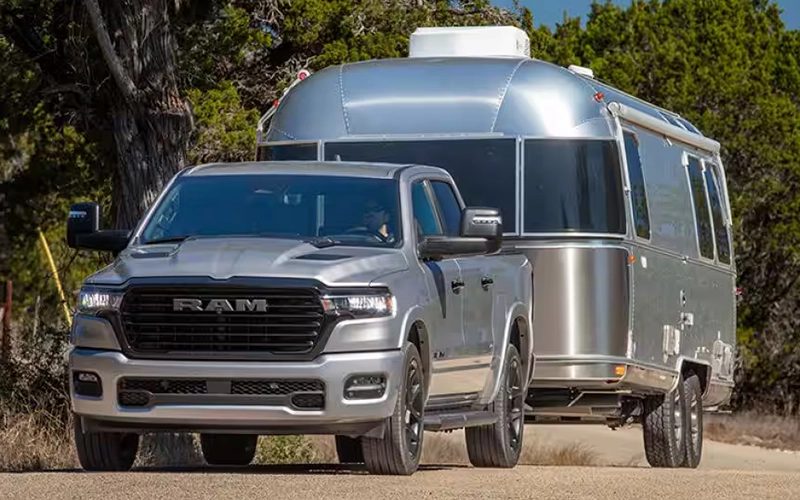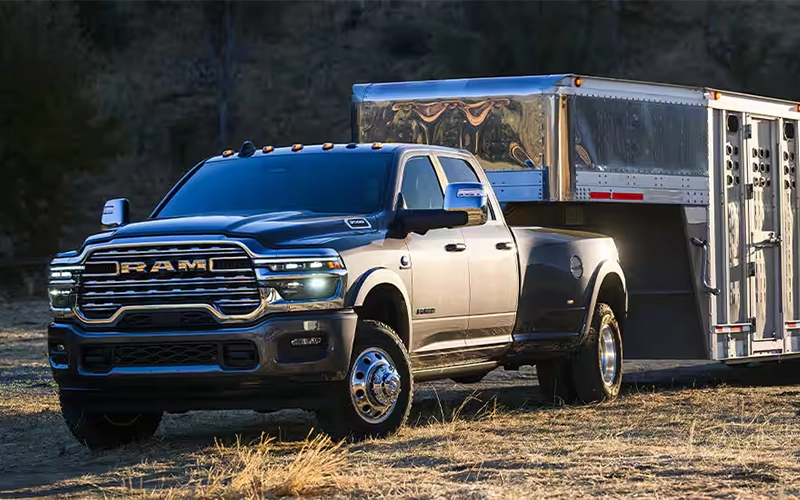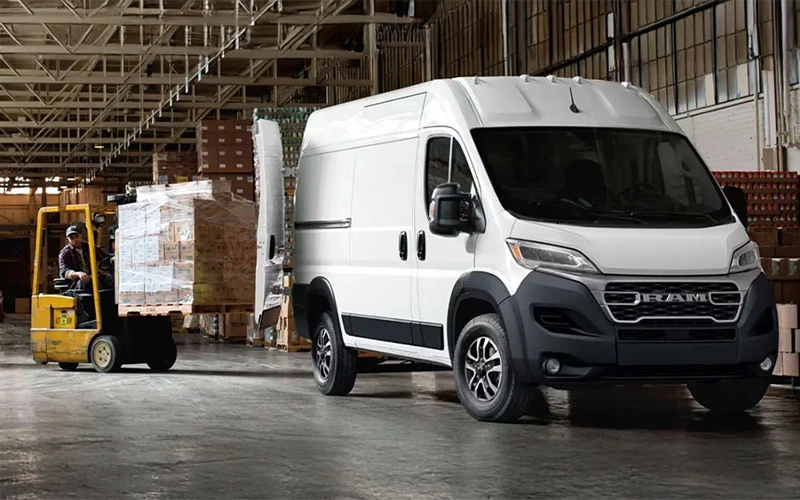Main Menu
2025 Ram Vehicles Tow Guide

Towing is one of the major reasons why people buy trucks. However, a lot goes into determining a towing capacity and you can have one model with vastly different towing capacities depending on how it’s equipped. For that reason, it can be difficult to know which truck and which equipment you need to tow your boat, camper, worksite generator, or whatever else you need to transport. Our team at Sarchione CDJR has created this guide to Ram vehicles and their capacities to make things easier for you.

2025 Ram 1500 Towing Capacity
A mainstay of the Ram truck fleet, the Ram 1500 offers three different engines and excellent towing capacity. From the economical 3.6L Pentastar® V6 with eTorque found on lower trims to the work-ready 3.0L Hurricane Inline-6 and muscular High-Output 3.0L Hurricane Inline-6 – the Ram 1500 engine lineup has something for every type of towing need. Even more impressive, the Ram 1500 is available with class-leading towing technology that helps you tow both safer and smarter. Highlights include Trailer Reverse Steering and Brake Control, Trailer Light Check, an LED Trailer Hitch Light, and the Trailer Tire Pressure Monitoring System. Combined with a truly upscale interior and innovative infotainment features, it’s easy to see why the Ram 1500 continues to lead the pack when it comes to towing capabilities.
| Engine | Horsepower | Torque | Max Towing (lbs) |
| 3.6L Pentastar® V6 with eTorque | 305 | 269 lb-ft | 8,110 |
| 3.0L Hurricane Inline-6 | 420 | 469 lb-ft | 11,570 |
| High-Output 3.0L Hurricane Inline-6 | 540 | 521 lb-ft | 9,920 |

2025 Ram Heavy Duty 2500/3500 Towing Capacity
When you have more serious towing needs, you need a more serious truck. The Ram 2500 and Ram 3500 are Ram’s heavy-duty trucks, both equipped with significantly higher towing capacities than the Ram 1500 no matter which engine you choose. The principal difference between these two trucks is that the Ram 3500 is available with a dual-wheel rear axle, which gives the Ram 3500 a higher towing capacity with the same engines. The Ram 2500 has its own strengths, including a couple of off-road-focused trims that aren’t available on the Ram 3500. For towing guide purposes, the rear axle and additional engine are the main differences. Both benefit from the excellent Ram truck interior that we touched on with the Ram 1500.
Ram 2500 Towing Capacities
| Engine | Horsepower | Torque | Max Towing (lbs) |
| 6.4L HEMI® V8 | 405 | 429 lb-ft | 17,750 |
| 6.7L Cummins® Turbo Diesel I6 | 370 | 850 lb-ft | 20,000 |
Ram 3500 Towing Capacities
| Engine | Horsepower | Torque | Max Towing (lbs) |
| 6.4L HEMI® V8 | 405 | 429 lb-ft | 18,150 |
| High-Output 6.7L Cummins® Turbo Diesel I6 | 430 | 1,075 lb-ft | 36,610 |

2025 Ram ProMaster Towing Capacity
The Ram ProMaster is, as you’ve no doubt noticed, not a pickup. As a van, the strength of the ProMaster is its payload capacity of 4,820 pounds, much higher than you’d find in anything other than a heavy-duty pickup, rather than its towing capacity. However, its towing capacity is roughly what you would expect from a midsize pickup so we’re including it here. The ProMaster is powered by a 3.6-liter Pentastar® V6 which is similar to the one found in the Ram 1500 but not quite the same. Here, the V6 is tuned to be extremely low maintenance and to be able to idle for long periods of time without causing damage to the engine internals. In this form, it makes 276 horsepower and 250 lb-ft of torque and gives the Ram ProMaster a towing capacity of 6,910 pounds.
Like this feature? See all vehicles with
Like this feature? See all vehicles with
Like this feature? See all vehicles with



